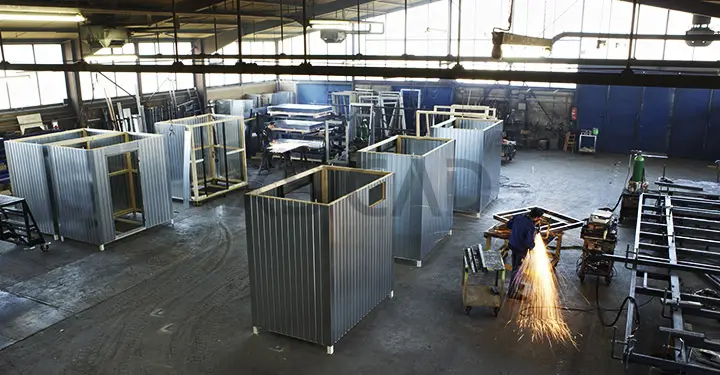Our Articles

DfMA – Why MEP Contractors Should Consider It
When something makes your life easier, why not use it? Design for Manufacture and Assembly (DfMA) is a building construction practice that involves integrating factory-built building components or modules on site. It is a practice that results in several advantages, but the most important ones are that DfMA facilitates improved quality, improved time management and a safer site.
As DfMA includes the assembly of prefabricated elements or modules, MEP (mechanical, electrical and plumbing) contractors can use prefabricated construction modelling, DfMA modelling and drawings and modular construction drawings to help deliver sound and accurate MEP services.
In addition to design, it is essential that the owners, design consultants and MEP contractors agree on the project’s timeline. Using MEP prefabricated modules in the DfMA process means that MEP designs must be finalised early on. That way, rework and other costly and unproductive delays can be avoided. The timeline comes into play even for procurement and logistics. Design decisions regarding factory manufacture must be finalised early in the planning stage, so that the requisite materials can be procured on time. To do so, the MEP contractors will collaborate with the general contractor and building engineering consultants. The input from the MEP contractors can be used effectively and thus help avoid additional costs and delays.
Project site supervision teams can monitor and supervise the work in progress at a controlled factory setting during the DfMA process rather than travel to the site. This becomes useful when MEP unit prototypes are being introduced. Instead of finding an area where the prototype can be tested on site before installation, using DfMA means that the prototype unit can be tested in the factory, inspected, tested and then mass produced in a location away from the site. Such a process helps to make sure that the MEP units are produced in compliance with drawings and specifications early on, avoiding costly rework.
To facilitate convenient methods of quality control, MEP contractors can use Building Information Modelling (BIM) services. The MEP BIM data can be accessed via a mobile to execute quality checks, inspect a site and supervise work progress. Checks that can be performed include the following:
The MEP contractor’s team members can check on the quality processes and update the BIM model regularly in the DfMA process.
Notable Advantages of DfMA for MEP Contractors
When looking at ‘fit-out kits’ delivered to the site, it can be observed that everything that is required for the relevant work can be created and delivered, such as :
Further reasons why MEP contractors should consider DfMA are as follows:
In the era of prefabricated construction BIM methodology, the DfMA process provides MEP contractors with a wide range of advantages, as can be seen above. It is crucial to employ accurate DfMA modelling and drawings in this process. As costs are continuously increasing globally, many Western firms find it advantageous to source their prefabricated construction modelling and modular construction drawings overseas, where they can enjoy the many benefits of precise DfMA modelling and drawings delivered by seasoned and well-qualified professionals, who are also cost-effective. For MEP contractors, these options are certainly worthy of consideration.

